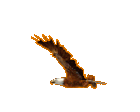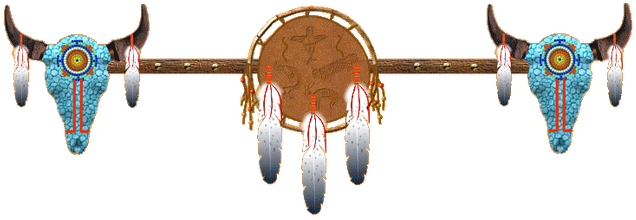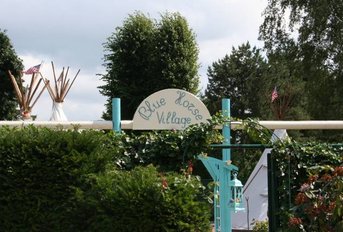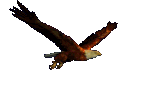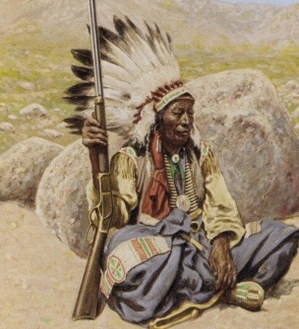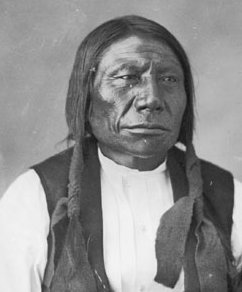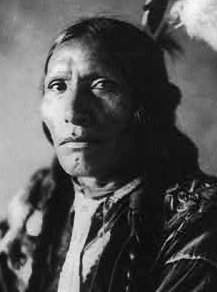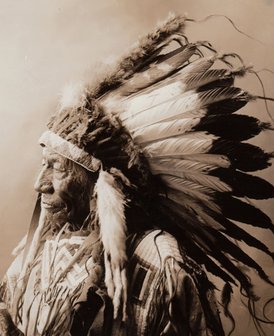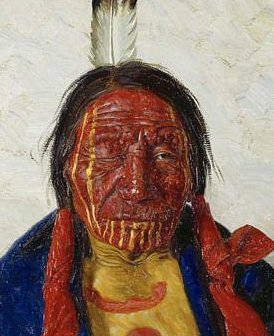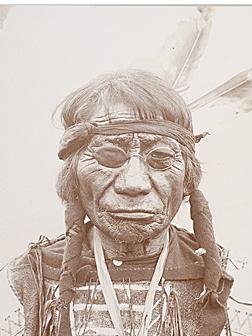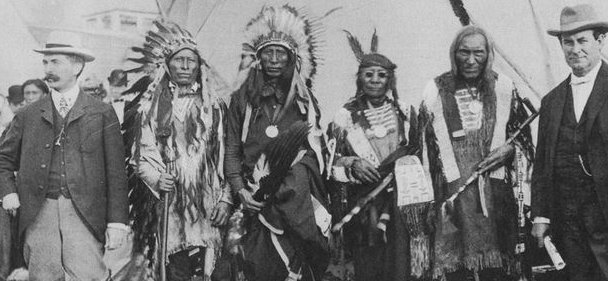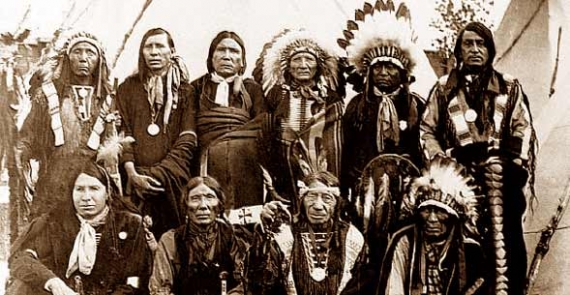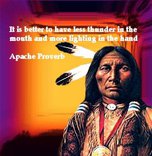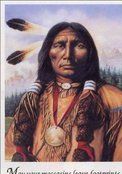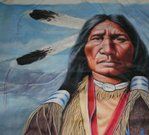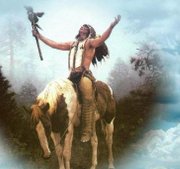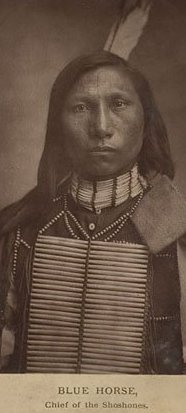Blue Horse Village© 7/2022
Blue Horse Village
Blue Horse Village
Het ontstaan van het Blue Horse Village
Het stil ontwaken in verbondenheid met de Scheppende God.
Vader, Moeder en de alles omvattende Heilige Geest.
Jezus bracht inspraak tot ons hart,
de boodschap van Blue Horse (Ogallalla Sioux)
zeer discreet ter harte te nemen.
Zo werd het pad van de rode weg
bewandeld doorheen het westen.
Een berg van obstakels met pijn en verdriet.
Het was alsof de voorgeschiedenis zich herhaalde in deze eeuw.
Door de universele kracht van de Goddelijke boodschap
heeft het Blue Horse Village zijn bestemming bereikt
in het westen.
Op weg naar de eindbestemming,
de reincrenatie van het Blue Horse Village.
Van de oude naar de nieuwe tijd zal
alles voltooid en volbracht zijn.
Het Blue Horse Village Team.
The west is where we belong the wolves and i
and my old friends now dead.
May we meet again on the odher side.
Blue Horse Lakota Warrior 1906
Het westen is waar we thuis horen de wolven en ik
en al mijn oude vrienden die reeds overleden zijn.
Dat we elkaar weer mogen ontmoeten
aan de andere kant.
Blue Horse Lakota Warrior 1906
Foto: Black Hills Gebergte
God Bless You
Mitakuye Oyasin
Chief Blue Horse
Foto Chief Blue Horse geschilderd door John Hauser
Harvard Independent
No other artist in the country has enjoyed the opportunities experienced by Mr. E. A. Burbank,
now a resident of Los Angeles - the painter of Indian portraits, to meet face to face,
and on their own ground, the once noted Indian chiefs America now so rapidly passing away.
For the last twenty years Mr. Burbank has journeyed from camp to camp among the aborigines of the northwest and southwest, painting successively all the great warriors whose prowess has made their names famous in frontier history.
It is, therefore, with considerable pride that The Graphic calls attention to a series of articles from Mr. Burbank's pen, describing his personal interviews with these once-powerful war chiefs, and illustrated by portraits from life,
re-drawn in pencil especially for the Graphic, from his original studies.
First in this notable galaxy was a picture and story of Red Cloud, the famous Ogallalla (sic) Sioux, recently deceased. Geronimo, the noted Apache chief who preceded Red Cloud the happy hunting grounds by a few months, followed. Editor.
Famous War Chiefs I Have Known and Painted
By E. A. Burbank Chief Blue Horse (Ogallalla (sic) Sioux)
At my hotel in Pine Ridge I chanced to meet an Indian trader who owned a store about twenty-five miles from the agency.
He said that a good many years before a band of Sioux had captured twelve of his comrades and planned to burn them at the stake.
Blue Horse, who lived forty miles distant, heard of their intentions and immediately mounted his horse and rode as fast
as he could to where the Indians held the whites captive.
The trader said he never saw an Indian or a white man work harder than Blue Horse did that day to save the lives
of those twelve men,
which he was able to accomplish, and from that time on, he said whenever he met Blue Horse he always gave him money
and tobacco in recognition of his aid to white men in distress.
Blue Horse was extremely homely of features, but exceedingly witty. He had but one eye; he lost the mate when chopping wood, a stick having flown up and penetrated his eye, destroying the sight. He went to the agent and asked him to write to the Great White Chief at Washington to send him a new eye; that he did not want a glass eye, but a good eye that he could use.
While he was in the agent's office the carpenter was making a coffin out of a bacon box. Blue Horse told him that when be died he
did not want to be buried in a bacon box doubled up, that he wanted a box long enough so he could stretch his legs if necessary.
Blue Horse insisted that I must paint four portraits of him, but when the first one was finished his daughter was very ill, and
he asked me to come to his house to see her, which I did.
She died a few days later. Blue Horse then came to me with tears in his eyes, and,
after telling me how badly he felt, said be wished to borrow $7.
I asked him what be wanted to do with the money.
He said to buy calico and presents for relatives of his dead daughter. Blue Horse, I replied, you can't afford to do this: why do you do it? Well, he answered, because my dead daughter will stand a better chance in the next world. If you will lend me the money
I will pay you by posing for you.
I agreed and banded him over the seven dollars. He said his heart was sick, that he wanted to go to Rosebud,
about a hundred miles away,
where he could see a different country and new faces that would help him to forget as much as possible his grief.
But, he concluded, I will return in fourteen days to sit for you.
True to his word, he returned at the end of two weeks, and I painted three more portraits of him.
He invariably dined with me at noon and always had a good appetite. One day, after dinner, I said to him, Blue Horse,
I notice that you always eat everything in front of you, but you never pass your plate back the second time or ask for
another cup of coffee. Why is that? Is it because you cannot eat any more or drink any more coffee
O, yes, he replied, I could eat more,
but I thought the twenty-five cents you paid for my dinner was for just what was placed before me.
No, I said, the twenty-five cents pays for all you can eat; hereafter,
if one plate is not enough, ask for more, and drink all the coffee you want.
All right, he replied, I will. And be did.
I also told him to tell his friends this, and suggested that if any white men sitting at his table left anything to eat on their plates
before them, that it would be all right for him to gather it up and take it home for his wife and children.
It is needless to say that all the Sioux Indians who patronized that hotel afterward got all that was coming to them.
Hardly a day passed without Blue Horse coming to my studio to visit me.
He would sit down and smoke a little, short, strong pipe and gossip with the other Indians present; all the time he was
talking he would be fanning himself with the wing of a turkey.
His face usually was painted red, and he wore all the Indian clothes he had, with a single feather on his head.
He was a thorough Indian, and extremely kind-hearted. His principal object in life was to try to make others happy around him.
One time he was in the Indian trader's store with his little niece, who saw something on the shelves that she very much wanted.
Blue Horse had no money, so he took off his old moccasins and gave them to the Indian trader in exchange for
what the little girl craved and he walked home barefooted.
Soon after leaving Pine Ridge I received the following letter from Blue Horse which was dictated to his interpreter:
Son of the Shadow-Maker: This morning I am glad to shake hands with you through the white man's way,
and to tell you through this paper a little of my past history.
I am the second son of the great Sioux Chief, Smoke, to whom more than seventy-eight years ago,
there was born two sons, viz, Big Mouth and Blue Horse.
As Big Mouth was the elder, he became head chief upon the death of our father,
but thirty winters past another Sioux chief,
named Spotted Tail, laid in ambush and killed my brother. Being of peaceful disposition,
I did not shoot the murderer, as I was advised to do but instead, separated and
moved with the Milk band of Sioux to another locality.
The Blue Horse village afterward became noted as a place of refuge for all white men in distress,
and this morning, kind friend, I raise this pipe of truth and do solemnly swear by and in the presence of
the Great Spirit, that this brown hand of
old Chief Blue Horse has never risen to smite a white man.
I have lived in peace here and have assisted the Great Father (President of the United States) in his work advancing
my people from warriors to citizens, and to accept the,
load and burden of your race and with downcast heart I have noticed my Great Father
giving nice carriages and fine horses and building frame houses for some who have murdered many of your race.
If you ever in your travels should meet my Great Father, please ask him to remember Blue Horse.
White men have their Bible and their Christ to guide them to the life to come.
We Indians have our White Cow traditions and brave deeds.? Let us wait, my friend, and see who gets there first.
I am now going to leave you, as it were.
I hope to meet you again, and I raise my pipe above my head and say, Great Spirit,
I pray be good to my friend, the Son of the Shadow-Maker. Toward the pine trees, north, cold winds,
treat him kindly toward the rising sun, east,
great sun shine on his lodge early every morning toward the place where the Shadow-Maker lives, south,
bless your son toward the land of the setting sun, west, waft on the breezes our friend this way.
Lowering my pipe of peace, I say,
Kind Mother Earth, when you receive my friend into thy maternal bosom, hold him kindly let the howl of the coyote,
the roaring of the bears and mountain lions, the cold blasts of winds swaying the tops of
the pine trees be a sweet lullaby to him,
that shaketh the hand of your friend.
Chief Blue Horse told me that he was born the same day that Red Cloud saw light. He sat for a portrait for me at the time I painted Red Cloud, in 1897. Blue Horse had always been friendly with the white men, and he told me he never had killed a white man.
Foto's BLUE HORSE
After finishing my work in the north, I returned to Pine Ridge, and Blue Horse hastened to visit me as before.
I became very much attach to him.
When I left he held my hand in both his and shook it warmly; his heart was too full of emotion to speak a word.
He realized that the chances were we would never see each other again. He died several years ago.
Foto: geen gegevens.
Foto door Alaxander Gardner (Siris) - Dietmar Schulte - Möhring
Foto door Alaxander Gardner (Siris) - Dietmar Schulte - Möhring
Foto genomen in 1900
Foto van Blue Horse genomen door E. Burbank.
Foto van Blue Horse genomen door E. Burbank.
FT Cummings, Hoge Hawk, Jack Red Cloud, Blue Horse, Klein Wondje, Bryan
Foto van Links naar rechts:
De derde man op de 1ste rij is Blue Horse
Foto genomen door Grahame Hout
Chief
Blue Horse
Oh grote Geest,
wiens stem ik hoor
in de wind en wiens adem leven geeft
aan heel de wereld,
hoor mij.
Ik ben klein en zwak.
Ik heb je wijsheid
en sterkte nodig.
Laat me wandelen
in schoonheid en
laat mijn ogen altijd
de rood/paarse
zonsondergang behouden.
Laat mijn handen
de dingen die ik
gemaakt heb
respecteren en
mijn oren scherpen
om je stem te horen.
Maak me wijs zodat
ik de dingen die jij
mijn volk geleerd hebt,
kan begrijpen.
Laat mij de lessen
leren die je verborgen
hebt in ieder blad
of steen.
Ik zoek sterkte,
niet om sterker te
zijn als mijn broer,
maar om te
vechten met
mijn grootste vijand,
ikzelf.
Zorg dat ik altijd klaar ben
om tot jou te komen met schone handen en oprechte ogen.
Zodat, als het leven
weggaat, zoals de
zon ondergaat,
mijn ziel naar jou
kan komen
zonder schaamte.
